Posted by Jinnistan  8/23/2023 10:55 pm | #1 |
It's been asked, nay tasked, of me what form a tome would encase a hypothetical textbook comprising the approximate fathoms of a Jinnistani filmographic encyclopedia. This will be a humbly mortal attempt.
Among the candidates of inaugurating the medium are the several modifications of "magic lanterns", a 2000 year old device from ancient China illuminating images on a wall. It is cinema's midwife from Plato's cave. From the zoetrope to the "magic mirror", most of these devices were mostly used and considered as children's toys or delightful distractions. The concept isn't that far from what would become the standard celluloid film, which is basically 24 images in quick sequence, essentially the same concept as the animated flip-books. The main obstacle to an optimal "living" image lied in designing a device, a camera, which could achieve the speedy capture of these "frames". Not too long, within decades, after the development of the single-image camera, work continued on this chronophotography - creating a chronology of successive images that can be both captured and projected.
Primarily, this interest tended more to technical and scientific means. What I believe is the best case argument for "first film" is the 1874 Passage de Venus, an attempt to chronophotograh the transit of Venus eclipsing the Sun by French astronomer Jules Janssen. The images were captured by a "photographic revolver", which looks a bit more like a photographic cannon.
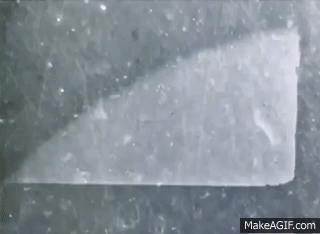
Another French scientist, Etienne-Jules Marey, developed another weapon-looking camera to quickly capture images, and his work primarily concerned "animal locomotion". Scottish radiologist John Macintyre created a one minute film composed of successive x-rays.
Eadweard Muybridge
Of the more interesting pioneers of the motion picture camera is this guy, a British eccentric inventor who settled in San Francisco, and whose personality has sometimes been attributed to a head injury from a stagecoach crash. He also shot and killed his wife's lover and got away with it in court, which may or may not have led to his preoccupation with flinging dong, but pretty badass nonetheless.
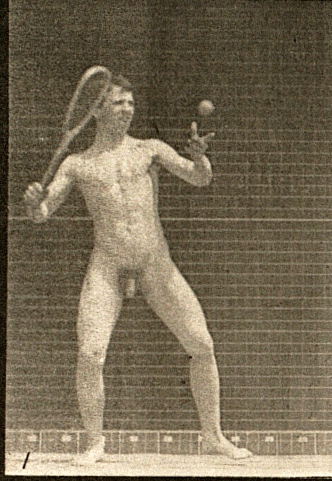
As you can see, these "films" are really more like 19th century gifs, a handful or two of images played just like a flipbook.
Louis Le Prince
Perhaps a more minor figure, this Frenchman is credited to making the first true film in 1888, as well as developing what is considered the first working camera - though on paper rather than celluloid - in the modern sense. Below is the oldest motion picture in its entirety.
Le Prince's fame may be more relevant to his bizarre disappearance, last seen boarding a train on his way to screen his films in the US. His body was never recovered, and it remains an unsolved mystery. Intriguingly, at the time of his disappearance, Thomas Edison was also working toward securing a patent for a motion picture camera, which he succeeded to do shortly afterward. Because of this patent, Edison would frequently demand royalties for every film ever made after that, which, along with Edison's habit of pirating other people's movies, led to a number of lawsuits throughout the 1890s. At one of these trials, Le Prince's son, Adolphe, testified by presenting his father's films as evidence that Edison did not, in fact, invent the first motion picture camera. Edison would lose the case a year later on appeal, and shortly after that Adolphe Le Prince was found dead in New York City. Maybe I'll also throw in a completely unrelated note about Hannibal Goodwin, a gentleman who had filed for a patent on the celluloid film process before George Eastman - a partner of Edison - could complete his own development, and at the time in 1900 when a lawsuit over these competing patents commenced, Goodwin was involved in an unfortunate "street accident" near a construction site. Eastman would lose his suit, but it would take a decade to litigate.
Emile Reynaud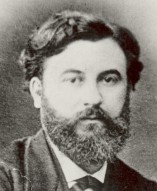
But all of that aside, I want to specifically focus on the true pioneers of film as an artistic medium, and Emile Reynaud amounts, in my estimate, the first film artiste. At this time (circa 1890), films were primarily a technical demonstration. Even throughout the rest of the 1890s, and well into the 1900s, the vast majority of films that were produced were documentary product ("actualities") of rarely more than a minute or two in length. These were what was exhibited by the Lumiere brothers in Paris and on Edison's penny arcade kinescopes. Sneezes, kisses, trains in the station, brief splashes of bustling city life, an occasional boxing kangaroo. There was no conceptual ambition outside of the sheer marvel of the moving image. 
Reynard didn't even use the most sophisticated equipment, but reverted back to a basic rotating zoetrope, which was then projected onto a larger screen, called a praxinoscope. But his scenes were animated compositions, really the very first cartoons, sets of 12 to 20 which he shuffled in and out of the device, using dual projectors to dissolve from one scene to the next, while he narrated the stories in presentations of 10 to 15 minutes each. Reynaud personally performed these shows, Pantomimes Lumineuses, at Paris' Musee Grevin from 1892 to 1900. These five animations consist of the first time that film was considered as a narrative medium and an exploration of its possibilities of imaginative, rather than purely natural, visual aesthetic - in other words true cinema.
Only fragments remain of Reynaud's work unfortunately, but they suggest enough of what so greatly set his cinema experience apart from the more widely available nickelodeon "peep shows".
Posted by Jinnistan  8/24/2023 11:00 pm | #2 |
Without dwelling too much on regurgitating the same old facts and myths that I'm sure we're all familiar with, I did feel that in unraveling the core of this world of flashing shadows that we establish that this enterprise is fundamentally founded upon penis and conspiracy. This understanding will make the journey much smoother for both the reader and myself.
Max Skladanowsky
Other than a minor chronographer, Ottomar Anschutz, this is the first significant German filmmaker. Although the films that he made with his brother, Emil, were functionally identical to those common types produced by Edison and the Lumieres - single shots of a few seconds each - Skladanowsky was fortunate enough to have more of a sense of humor and slight surreality about the scenes that he chose to depict, whether they be demonically dancing Bavarian children, whirling Dervishes or the aforementioned boxing kangaroo, all of which makes them far more interesting for modern audiences than the mundanity depicted by most of his peers. Skladanowsky also had the good taste to be portrayed by Udo Kier in A Trick of Light. Below are most of his surviving works.
Alexander Black
Another narrative pioneer, like Reynaud, Black used multiple magic lanterns with a projector to dissolve images, four a minute, into what he called "picture plays". His 1894 work, Miss Jerry, which ran 45 minutes, is then another milestone in developing towards longer-form uses of projected images for storytelling purposes rather than simple spectacle. Unfortunately no complete sets of these slides from his three picture plays are in existence, and it would be nearly a decade before a film of similar length would be produced.
Posted by Jinnistan  8/25/2023 6:50 pm | #3 |
Georges Melies
Look at that goddamn handsome devil. As close to a Father of Cinema as conceivable, it unsurprisingly involved a magician/puppeteer to finally make the transistion from film as a technical spectacle into a truly theatrical entertainment, all while elevating both the technical and spectacular elements.
It's impossible to overstate the significance of Melies' imaginative innovations into the core roots of what we think of as "a film" today, and while it's simple enough to measure this significance through a comparison with his late-19th century contemporaries, it's also easy enough to weigh his own evolution from his meager early output. Most of Melies' films from 1896-1898 are lost, although even examining their descriptions will show that the majority of these fell into the same category of mundane actuality pictures of between 30 and 90 seconds. Melies did his share of trains and cityscapes, as well as brief comic sketches, re-enacted war scenes and the occasional skin flick. Working as an untrained photographer, working indepedently to both build his own cameras and develop and print his own celluloid, he had to learn his craft on the job, and it only took him 100 or so films to find his flavor.
His inspired in-camera manipulations - stop-cutting, superimpositions, varispeed, reverse images - were initially used as methods of extending his own magic trick presentations (Conjuring, Vanishing Lady, Famous Box Trick) and eventually veering into the surreal (Four Troublesome Heads, Mysterious Portrait, Summoning the Spirits). Most memorably was his "scene fantastique", those films involving eleborate painted sets, props and classically/medieval-themed scenarios, while still retaining the plethora of mirth and magic. Considered the first "horror" films, due to their macabe characters and setting, is Le Manoir du diable (House of the Devil) from 1896 and its remake The Haunted Castle from 1897 (which is also Melies' first hand-painted color film). I can't find any other films from this time to even compare these with unless I were to include several in the following years which were clearly inspired by them. In addition to decapitations and Satan, Melies enjoyed his elaborate dream sequences, which he was certainly the first to attempt depicting. Possibly more impressive is 1896's A NIghtmare which combines the fantastical, the silly and the macabre. (Other lost Melies films from this era which describe the similar aesthetic are An Hallucinated Alchemist, Laboratory of Mephistopheles and Cave of the Demons.)
Posted by Jinnistan  8/26/2023 11:35 pm | #4 |
Arguably, the first real flower of Melies' genius was his 1898 The Astronomer's Dream, his most technically elaborate film at that point. You can see why the Moon may have had that rocket coming to him. And, in addition to Satan, Melies' muse, Jehanne d'Alcy, who recurs as a goddess in two of his other prominent fantasies of this time, Pygmalion and Galatea and The Temptation of St. Anthony.
It's again difficult to stress how unique these films are to this era. But even as Melies' inspiration would spread and we begin to see similar films flourish over the next few years trying to catch up with the above achievements, he would move on to bigger sights and delights, and in 1899 would establish himself as the world's premier conjurer of film spectacle.
Posted by Jinnistan  8/27/2023 11:39 pm | #5 |
Alice Guy-Blache
In terms of 'Mother of Cinema', there's really only one candidate, this remarkable woman who checks off a lot of boxes for firsties - 1st woman filmmaker (writer and director), 1st woman of color (being half-Chilean), 1st woman producer and (at 24!) 1st woman head of studio production (at Gaumont).
There's some contention however over her other notable 1st, which would be the producer, of any stripe, of the 1st narrative film. But as with the competing candidates for "1st film", the qualifications of what constitutes a narrative may vary. Emile Reynaud, for example, was clearly narrative, but some would say that they weren't films technically, which seems to me more like the semantics of presentation. Added to the confusion is not only the fact that Alice Guy's first narrative film, La Fee aux Choux (The Cabbage Fairy), is a lost film but that, despite the fact that by all accounts a very successful film when released in 1896, there have been so many differing, contradictory descriptions and explanations about the nature of the film. Guy herself would "remake" the film twice more, in 1900 and 1902, and to confound the issue further all three films have at different times, in different sources, been labeled under multiple names, and all three films seem to have alternate scenarios. (Gaumont wasn't great with their record-keeping.)
But if we were to assume that the 1896 Cabbage Fairy had the scenario as described later by Guy herself, then we would have a fanciful narrative (more or less) involving a couple picking from newborn babies growing out of a farmer's cabbage patch. This would place the film roughly along comparative lines as those narratives from Melies' House of the Devil and A Nightmare from the same year.
All of Alice Guy's pre-1900 films appear to be lost, but, even though both are distinctly different scenarios, we can possibly gauge the earlier work through them. The 1900 Cabbage Fairy has an actual fairy picking babies from cabbages. The longer 1902 film (the YT clip is mislabled), which has more commonly been titled Sage-femme de Premiere Classe (The First Class Midwife) - a title that Guy herself disavowed - shows a couple shopping for babies, and the midwife/fairy/merchant introducing them to her baby-cabbage garden. Also, for a taste of Alice Guy's aesthetic for whimsical fantasy, her next surviving film, Pierrette's Escapades, also from 1900 and hand-tinted.
Posted by Jinnistan  8/28/2023 12:26 am | #6 |
Some of Melies' prodigies...
George Albert Smith
As Melies' scene fantastique shorts grew in popularity, they were naturally imitated outside of France. Edison chose to pirate Melies' films, for example, until he eventually had his in-house directors begin their own brand of knock-offs. It isn't surprising that the British market was more respectful because from the outset, rather than pirate, the distribution company Warwick paid Melies his due royalties and fellow Warwick directors would seek out Melies' advice and guidance. It also isn't surprising that one of Melies' first distinctive influences was on someone else with a kind of occultish theatrical experience - in this case, a former stage hypnotist, George Albert Smith. The two films from 1900 are considered the first films to use 1st person POV shots.
Posted by Jinnistan  9/10/2023 8:30 pm | #7 |
Walter R. Booth
Another magician, the strong Melies influence never seems like mere imitation.
Booth made the very first film version of Christmas Carol in 1901, at what was considered then a premium length of 6 and a half minutes, and an early use of alternate tints for its fantasy sequences. Only about half of it survives.
Posted by Rampop II  9/12/2023 3:34 am | #8 |
Such a great thread. I'm enjoying this immensely.
Posted by Jinnistan  9/13/2023 10:32 pm | #9 |
James Williamson
A Scottish filmmaker, who's most famous film from 1901 is one of the most renowned marvels of this early era.
Ferdinand Zecca
A former collaborator of Melies', Zecca would make his own mark. His History of a Crime is considered the first use of flashback in a film. 1901's Conquering The Skies is his most iconic moment. Using a matte superimposition - which allows only certain intended portions of the camera frame to be double exposed, allowing for cleaner image composites - Zecca shows himself flying a ship above Paris. This was a couple of years before the Wright Brothers success, but there were a few audiences at the time who believed that Zecca had actually achieved flight, making this perhaps the first 'hoax' film.
Posted by Jinnistan  9/16/2023 10:20 pm | #10 |
I want to give a nod to a couple of important figures who are not necessarily known for being visionary filmmakers.
Robert Paul's quiet impact is immeasurable. He's one of the most profound camera technicians of cinema. Cut more from the cloth of the earlier scientific technicians, he began buying whatever early film equipment was then available in Britain and then reverse-engineering, modifying and building his own cameras, projectors and eventually creating improved film stocks. He sold Melies his first camera, and worked with him to improve and rebuild new ones. Although Paul's own films never had the imagination to elevate above actuality scenes, he would produce the films of peers like Birt Acres, Henry Short, and he also produced the above films by Walter Booth. One of Paul's films nevertheless, 1898's Come Along, Do!, is the first film to use two different shots, spliced with a jump cut, and 1898's Our New General Servant is considered the first film to use intertitles. He would build the first reverse-crank camera, used in such films as Melies' A Dinner Under Difficulties and G.A. Smith's House That Jack Built.
Being a technical genius, Paul would go on to develop wireless communications for British submarines during WWI.
Charles Urban
Urban wasn't a filmmaker at all, but a producer and distributor, and even the films in which he was most personally invested were natural documentaries, travelogues and news footage. But as the pioneering chief of Warwick Trading Company, he would not only protect the rights of the foreign films he imported but would encourage and foster the talents of his British stable, including Robert Paul, George Albert Smith, Walter Booth, James Williamson. He stands as a stark contrast to how Thomas Edison was doing parallel business across the pond, where Edison was far less willing to delegate credit and promote the talent under his umbrella.
Posted by Jinnistan  9/19/2023 9:56 pm | #11 |
A number of international firsts occurred in these early years - 1st Danish (Peter Elfelt), 1st Dutch (M.H. Ladde), 1st Czech (Jan Krizenecky), 1st Spanish (Salvador Toscano), 1st Argentine (Eugene Py), 1st Mexican (Gabriel Veyre/Eduardo Jimeno). Most of these films are either lost or otherwise unremarkable however, although one slightly later film by Peter Elfelt, 1903's Henrettelsen, is worth noting for having close to a distinct Scandanavian flavor showing an early example of striking composition.
The earliest films from Japan date to 1898-99, and are considered early "horror" given their focus on the supernatural. Bake Jizo, from 1898, is completely lost with very little information about its scenario, except we can guess it's related to the folklore of the 74 Jizo statues at the Jiun-ji Temple of the Kanmangafuchi Abyss in Nikko. The "Jizo Ghosts" refers to the supposed inability for anyone to "count twice the same number of statues". 1899's Momijigari, by Tsunekichi Shibata, is the oldest surviving Japanese film, a classic kabuki style noh that is quite lengthy (4 minutes) for its time. It's a traditional ghost story about a kijo named Momiji (Maple Leaves).
Posted by Jinnistan  9/21/2023 11:12 pm | #12 |
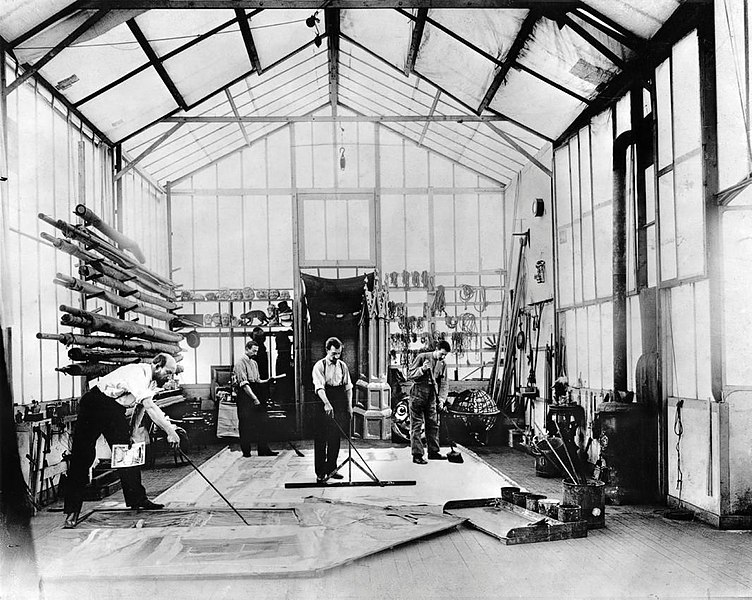
Posted by Jinnistan  9/22/2023 12:03 am | #13 |
But 1899 saw Melies create two significant leaps forward for narrative cinema. The first was a series of eleven films that taken together makes up a 13 minute docudrama, The Dreyfus Affair, based on the true-life espionage scandal in France at the time. Even broken up into segments, this represents the most ambitious dramatic structure in film at that time, including multiple scenes and what's considered the first close-up shot. Melies also chose to forgo a theatrical approach, preferring a more realist tone adapted from his re-enactment films, which in itself is a profound premonition of later neo-realist films, from Rome Open City to Battle of Algiers.
But, however essential, these formal advances are more humble compared to Melies' pure aesthetics, and 1899 also saw his first 'epic' success with Cinderella, a six minute, lavish (for the time) production that has a solid claim for the first international cinema spectacle success.
Posted by Jinnistan  9/25/2023 8:03 pm | #14 |
Melies would continue churning out his short films during this time, but from this point forward, he would concentrate his cinematic powers on one or two premium productions a year, all leading into his classics of the early 20th Century. Of these more ambitious projects, the most tragic loss is 1901's Red Riding Hood, an eight minute film that has not survived. These remaining films from 1900-02 are the foundation of imaginative cinema.
Posted by Jinnistan  9/25/2023 8:05 pm | #15 |
Whether or not we call A Trip to the Moon the first true cinema masterpiece or not, it definitely had an impact, ad 1903 may be the first year where we can gather something of a communion of features. Georges Melies was still happily producing short films of trick photography, and occasionally some splendid gems.
Posted by Jinnistan  9/25/2023 8:06 pm | #16 |
For his more long-form projects, he offered the The Kingdom of the Fairies and his Damnation of Faust. (An attempt at Dumas' Three Muskateerers is now lost.) Something of an interesting middle ground project was his three minute Jupiter's Thunderbolts, or Home of the Muses.
Posted by Jinnistan  9/25/2023 8:06 pm | #17 |
Ferdinand Zecca, of the flying machine, had followed Melies' lead with a longer, eight minute, and hand-painted color version of the story Ali Baba and the 40 Thieves and a 15 minute version of Don Quixote, teaming up with co-director Lucien Nonguet (who had also made a five minute film of William Tell inspired by Melies' earlier effort). But their follow-up really upped the ante for duration at 44 minutes, with Life and Passion of Christ.
Posted by Jinnistan  9/25/2023 8:07 pm | #18 |
Alice Guy also released a film version of Faust this year.
Alice Guy would then, after a couple of years, render her own version of the Vie du Christ in 1906.
Posted by Jinnistan  9/25/2023 8:08 pm | #19 |
Cecil Hepworth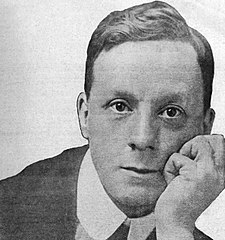
A British director known for a comedic touch, he made the first film adaptation of Alice's Adventures in Wonderland, and with the later Rescued By Rover, he scored what was at the time the first major success for a British original production.
Posted by Jinnistan  9/25/2023 8:09 pm | #20 |
Edwin S. Porter
Not to entirely neglect the Americans, still largely under the Edison production umbrella, Edwin Porter clearly became a major figure in cinema in 1903 with a pair of appropriately American works, The Great Train Robbery and Uncle Tom's Cabin, both of which were wildly successful. Great Train Robbery, in particular, has secured its place among the most significant of these early motion pictures with innovative editing and a variety of camera perspectives.
Porter's other films were a lot more inconsistent, but he made some more imaginative fantasy films, including his own verison of Alice in Wonderland at the end of the decade.
